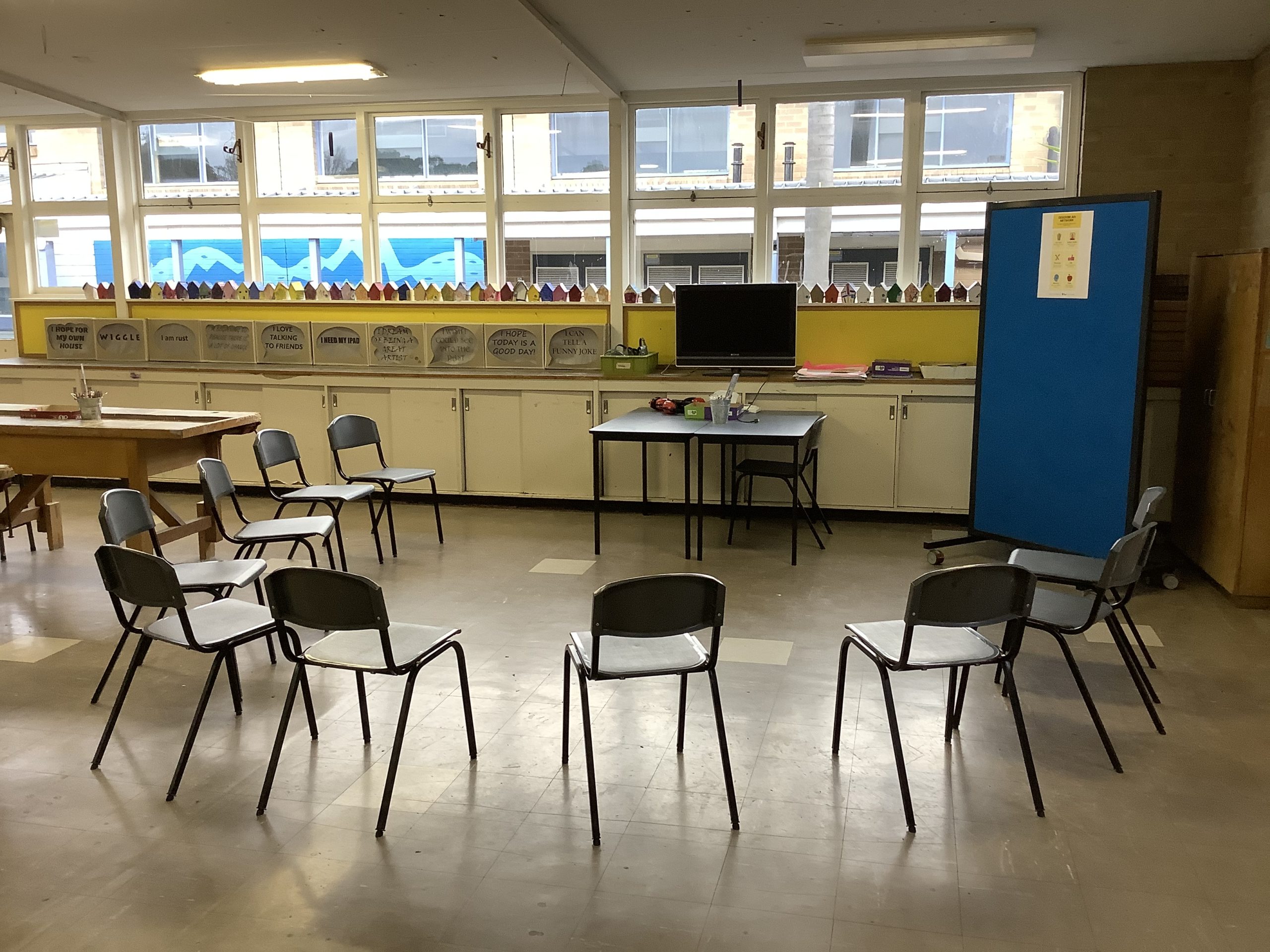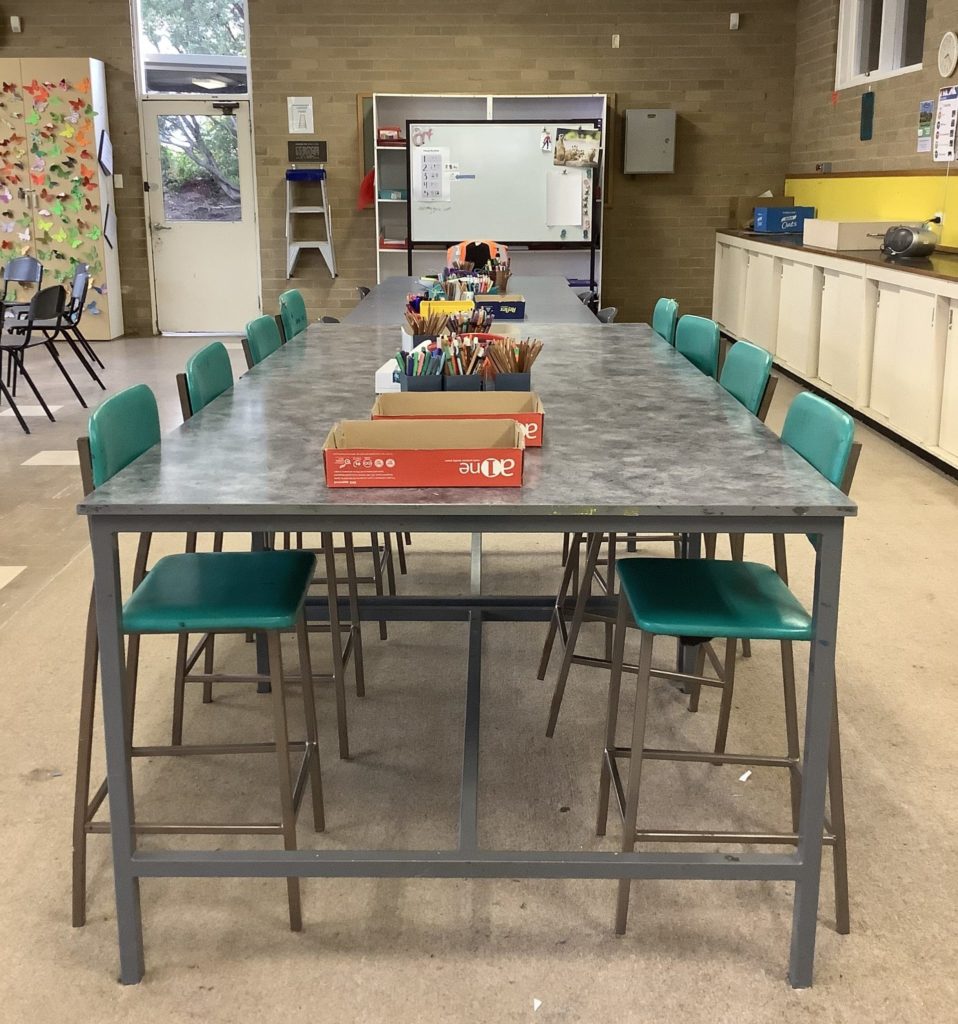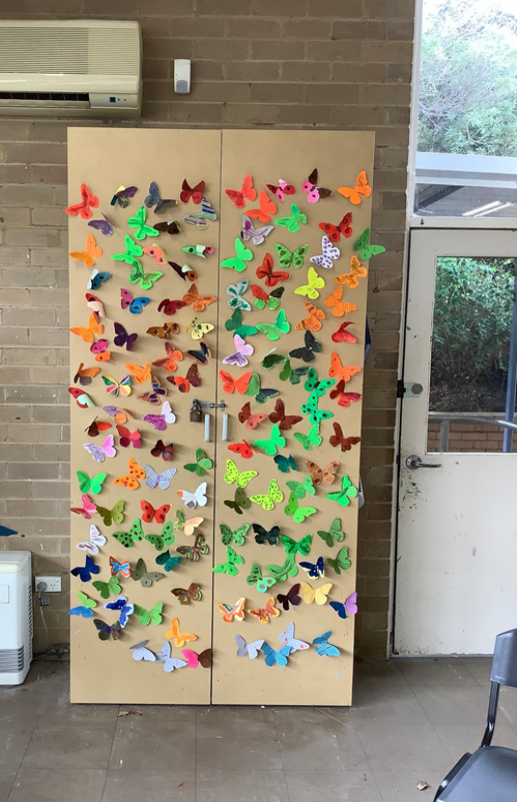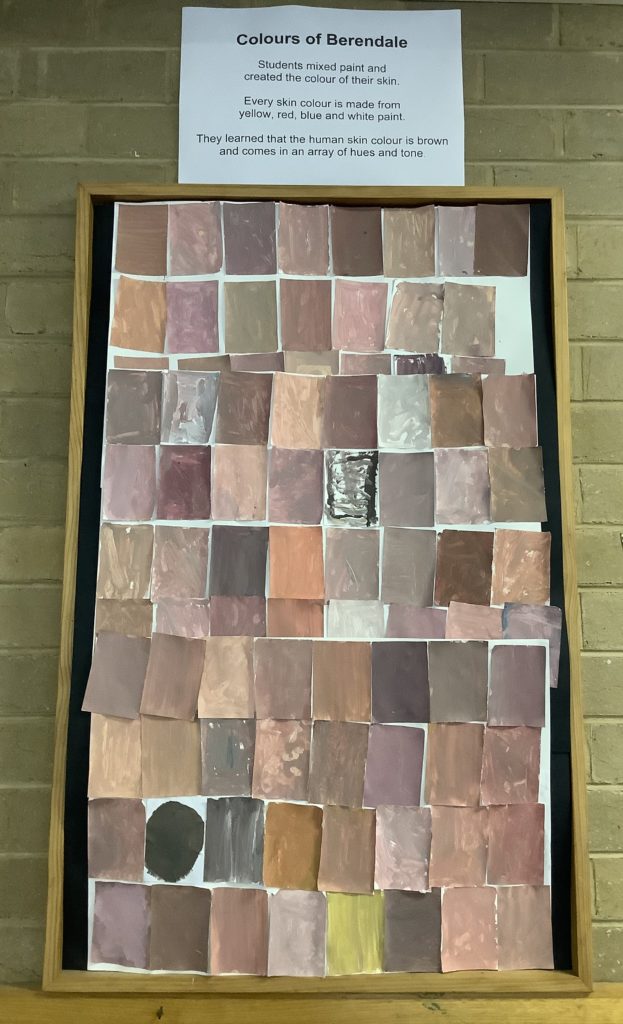BEYOND TECHNOLOGY: What I Learned About Students with a Disability from Remote Teaching
by Hau Ong (Andy) Ding
Looking BACK
I teach Art in a Special School, which caters for students with an intellectual disability in Years 7-12. When Remote and Flexible Learning started, we moved online. Every day, I met with my students through video conferencing, and for 6 weeks, we created Art together in a virtual space.
During Remote Learning, I observed my students making Art in their home environment. This led me to reflect on our journey together and identify a wealth of insights about students with a disability and their needs – most significantly, what was important to their engagement in Art with and without technology.
Here, I shared 3 things that I have learned about students with a disability from my experience of remote teaching. These insights have shaped my engagement and interaction with my students upon our return to the Art Room.
-
Students with a disability thrive in a flexible and structured learning environment.
Many students benefited from having a flexible learning schedule in their home environment. They enjoyed the luxury of movement and brain breaks at their leisure. For instance, in the middle of a virtual class, I had many students leaving the lesson after completing their artwork. They went for a walk or a drink of water. Later, they re-joined the group to see their peers’ finished artworks. Nevertheless, having a structured lesson was also crucial for my students. They needed to know when they had to return to the lesson, so that they could participate in the next activity with their class.
When I returned to the physical Art Room, I reorganised my lesson structure and the workspaces in the room. I aimed to allow my students to access some flexibility to engage in art-learning that caters to their individual needs and preferences.
Before Remote Learning, my students were expected to sit at an allocated desk in the room for an entire 45-minutes period. Whilst in this seating arrangement, they listened to instructions, watched a demonstration, made art, organised and packed up materials and shared their Artwork.
After Remote Learning, my lesson is structured into 3 parts: (1) explicit teaching, (2) Art-making, and (3) presentation. In between each part, students would move to a different section of the room. They would go to the Circle for explicit teaching, to the multiple Workspaces for Art-making, and return to the Circle for their presentation. This would allow for scheduled movement and brain breaks. Students could choose their workspace and stand to create their artwork during the art-making time.

ABOVE: This is the Circle, where students would participate in explicit and group instructions at the beginning of a lesson. They would also return to this space to present their artworks at the end of a lesson.


ABOVE: Multiple Workspaces for students to make Art independently or collaboratively.
A Success Story: In the past, I had a student, who refused to sit at a desk and make Art. He frequently wandered around the room. Now, within this new structure and environment, he has been able to engage successfully in his Art lessons. He would join in the Circle with his peers for explicit and group instruction. Thereafter, he would move to a table at the back of the room and make his artwork. When he finished his tasks, he would take a break by walking around and checking on what his peers had created. When it was time for the presentation of artworks, he re-joined the group to view and celebrate everyone’s achievements. Whenever he now leaves the Art Room, he has a big smile on his face, knowing that he has had fun and a positive experience in Art.
-
Students with a disability enjoy learning in a social and group setting.
During Remote Learning, my students had access to the lessons and supporting resources through my school’s online learning management system. They could complete the tasks independently at home. Despite this, many students voluntarily chose to attend their virtual classes. Namely, they enjoyed seeing me and interacting with their friends and peers in a shared learning space. Their favourite parts of the interactions were making artworks together, sharing their artworks and diving deeper into a topic – for example, we travelled virtually around the world to see the places, where some artworks were made. From this, I recognised that students with a disability seek and value opportunities for social and peer interactions in their Art-learning experiences.
Before Remote Learning, my students made their artwork independently. When they finished, other students would view their artwork, and I would provide feedback to the young artists.
After Remote Learning, my students would sit around in the Circle to start a lesson. Here, they would participate in a class discussion, game or icebreaker to learn about the lesson topic. They would learn to listen, exchange ideas and inspire each other. During the art-making time, students could choose to sit next to and collaborate with their friends to create an artwork. Towards the end of the lesson, students would return to the Circle and discuss their finished pieces. They would comment on and provide peer feedback to their community of artists. Some students enjoyed diving deeper and asking questions about their peers’ use of materials, techniques and processes. The lesson is concluded with our young artists feeling proud of their effort and achievements.
I have also been introducing more group projects – see the images below. In these projects, every student created and contributed an artwork to the final piece. Some students, who wanted to develop their leadership skills, were able to step up and assemble the final pieces for display. Every student enjoyed the group process and felt valued by their peers for their contribution.

ABOVE: Students created a Butterfly Wall installation. They were learning about pathways in the Arts and specifically about joining an Art group in their local community.

ABOVE: Students created a Futuristic City. Each student decided on what was important to them in the future and designed a building to represent their hopes and aspirations.

ABOVE: Students mixed paint and created their skin colour.
They contributed their work towards this final artwork.
-
Students with a disability value participation and support from their parents.
While on Remote Learning, many parents took the opportunity to attend their child’s Art classes. They joined in and made artworks with their child. Also, they enjoyed participating in and commenting on other students’ artworks. The students were delighted to receive encouragement and positive responses from our parent community. Our parents’ presence and involvement contributed to building our young artists’ sense of pride in developing their creativity and artistic skills.
Before Remote Learning, parents attended Student Support Group (SSG) Meetings to discuss their child’s learning and progress in the Art Room. Throughout the year, they were also invited to attend exhibition opening events and see their child’s artworks displayed in the Local Community.
After Remote Learning, parents would continue to attend SSG Meetings and student exhibitions. Student artworks have also been photographed and displayed in Online Exhibitions on my school’s learning management system. Parents have been invited to view and comment on their child and other students’ artworks. Students enjoyed reading the feedback from the parents in our School Community.
Our young artists are also becoming more aware of their viewers. When they develop ideas for their new artwork, students would consider how their viewers might respond to their art. They would then work towards and ensure that their artworks could be meaningful and enjoyed by their School Community.
Looking FORWARD
My students and I have now returned to our Art Room and can access a wonderful supply of materials. Even though everything in the room looks familiar, there is a new normal – beyond hand sanitising and social distancing.
My students are deeply immersed in their Art classes with a new routine and flexible expectations that cater to their socio-emotional needs. They walk into and out of the room feeling a part of a group. They make Art not solely for their personal interests, but also to engage with other artists in their class and the broader community. You can hear positive chatter from students sharing ideas and inquiring about the world in which Art is made. Their effort and work has been increasingly recognised and affirmed as they see and read comments from parents. For my students, our Art Room is a place that fosters a sense of connection and agency.
_____________________________________________________________________________
Questions for Reflection
- What have you observed about your students during Remote Learning?
- How have you applied these insights to develop or transform their creative experiences back in your Art Room?
_____________________________________________________________________________
Written by Hau Ong (Andy) Ding
Hau Ong (Andy) is the Art and Technology Teacher at Berendale School. He is also a Council Member on the board of ArtEdVic and leads the Art Education and affiliated Community to advocate for exceptional Art Programs for students with a disability.
MOST RECENT ARTicles :
Teaching Art is Easy
MAX DARBY
Sadly, for many of us, some people seem to think teaching a...
Learn more
Mornington Island Enterprise Art Project
BEN LANDERS
As a non-Indigenous art teacher with experience working in re...
Learn more
Robbie Rowlands
STUART KOOP
Seeing a body with holes, the incision so precise, the remova...
Learn more







